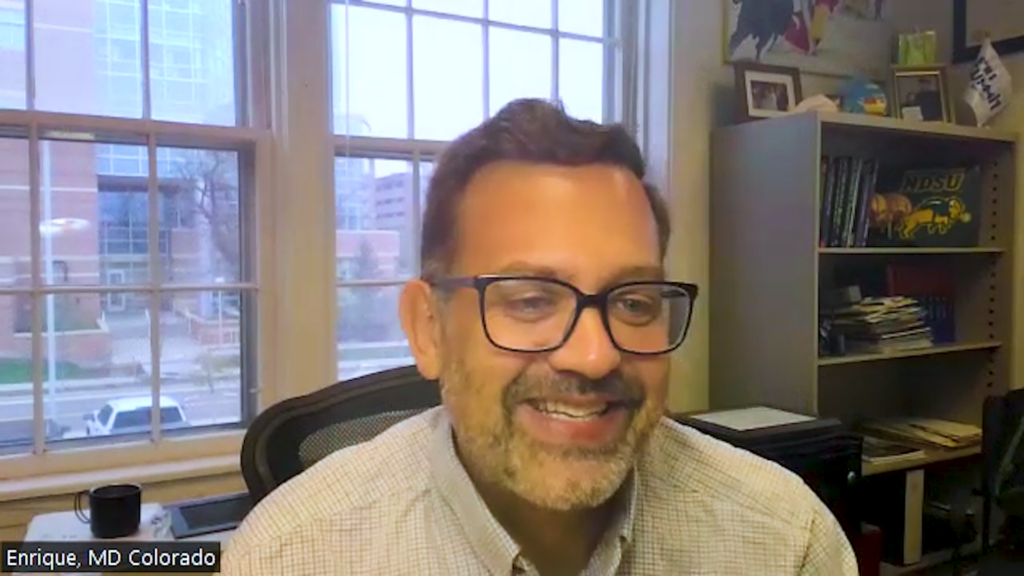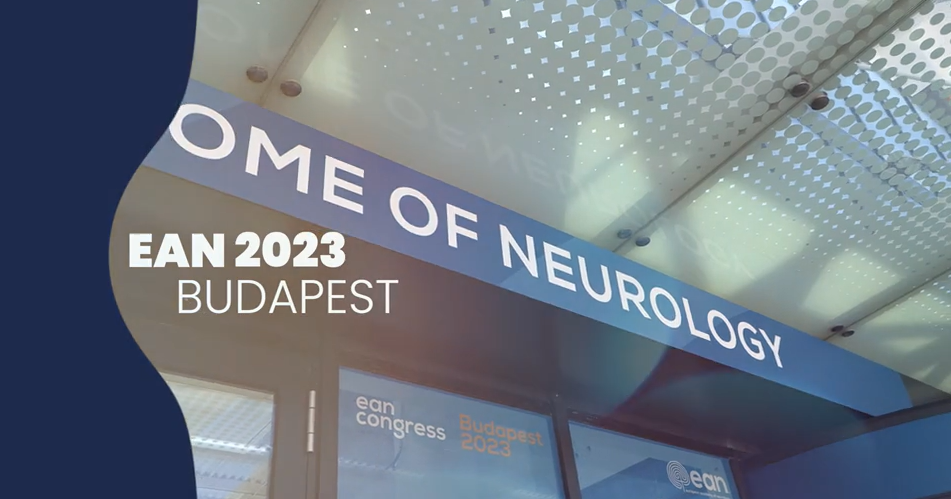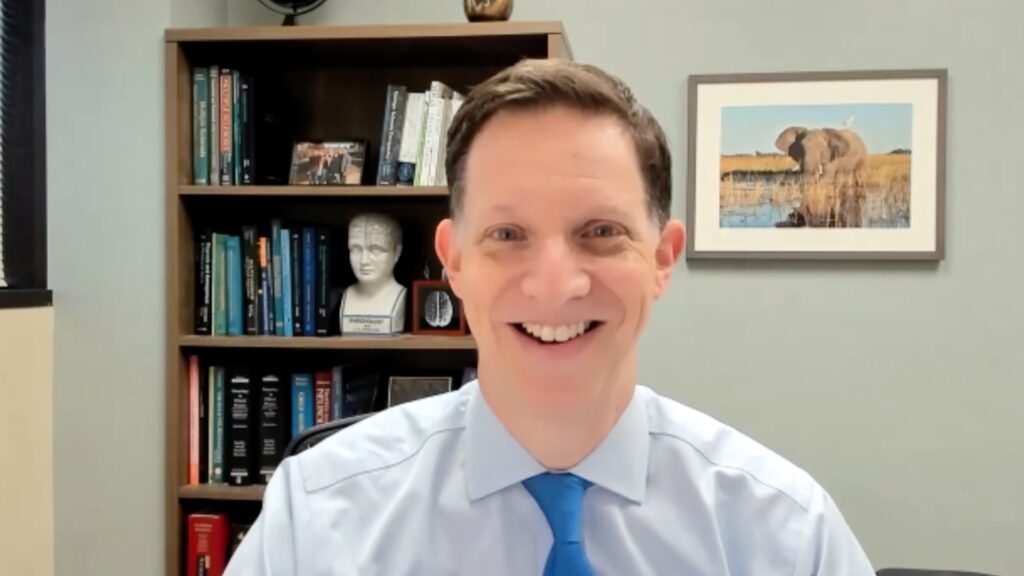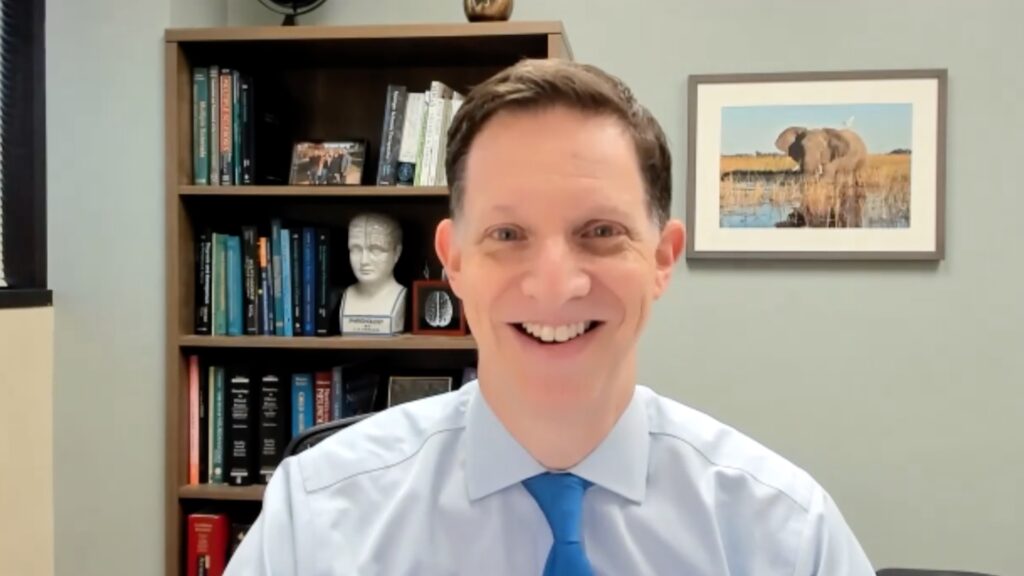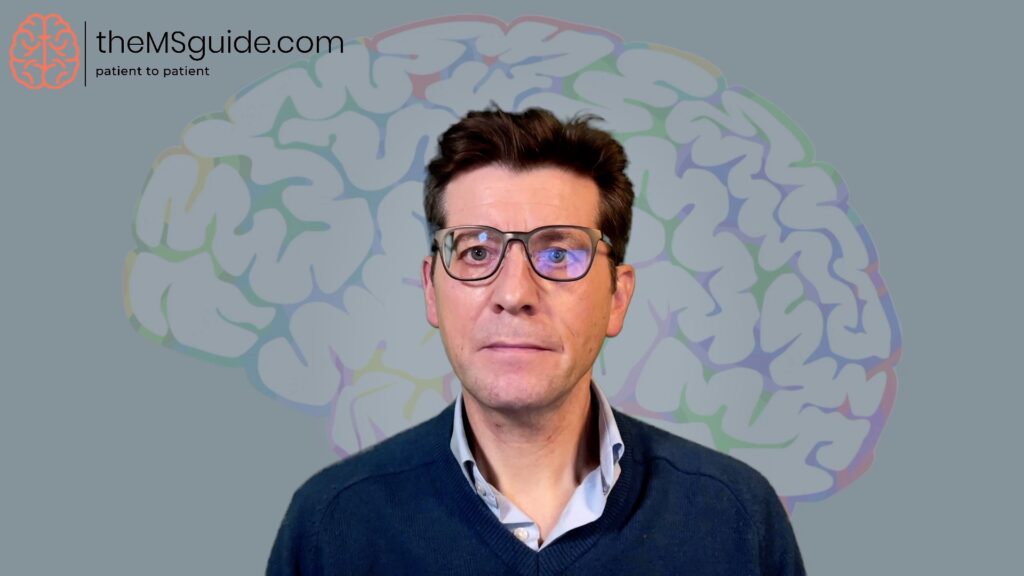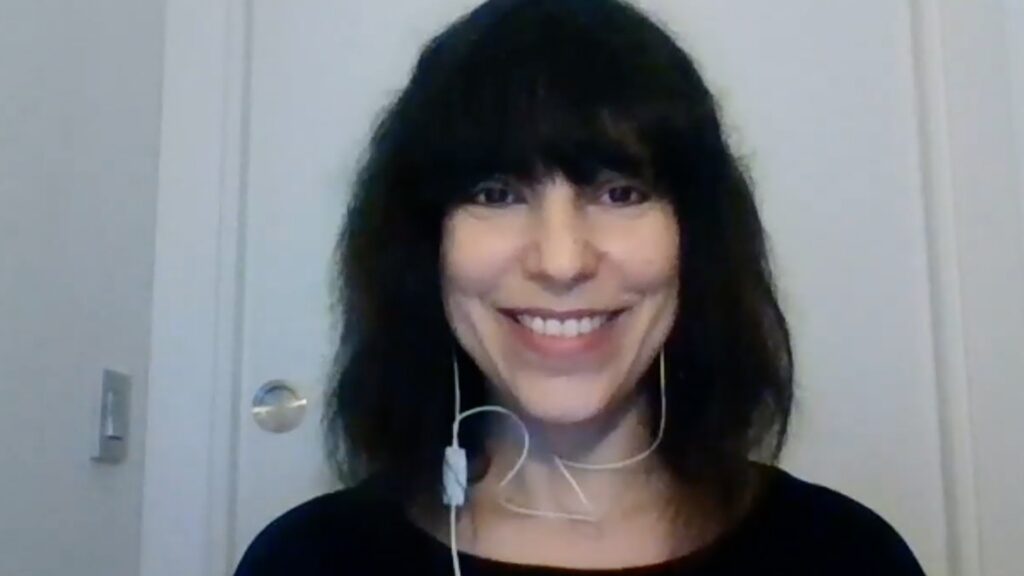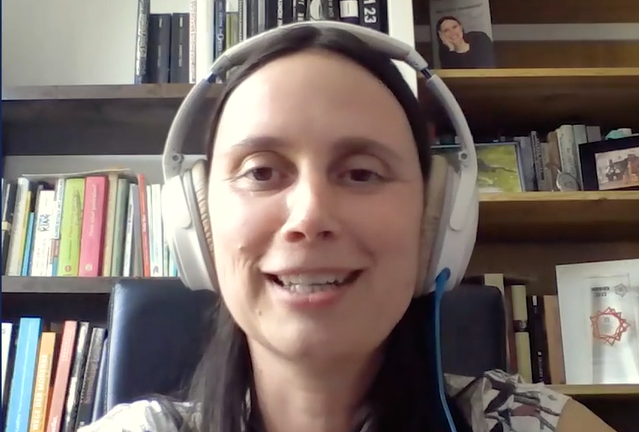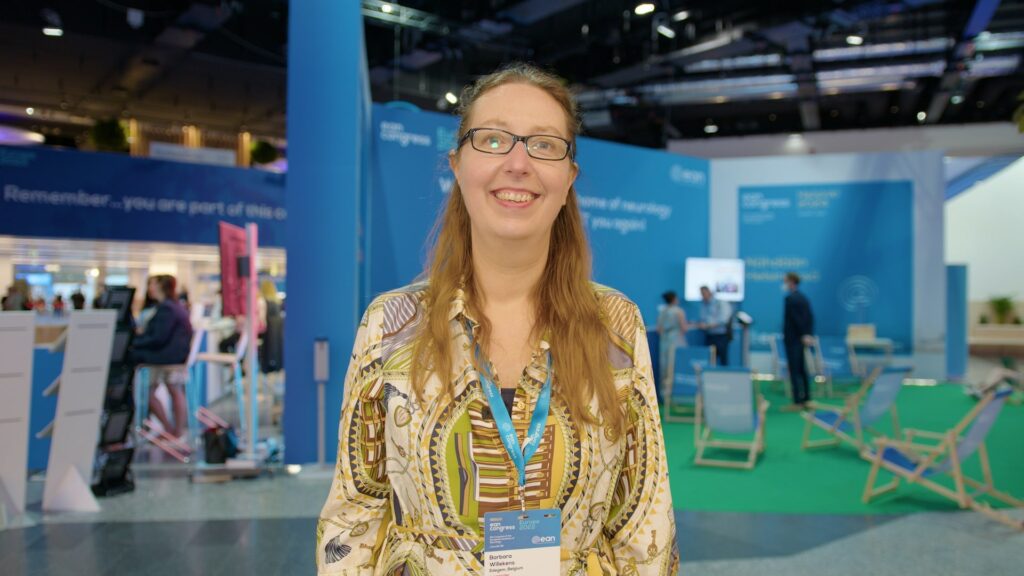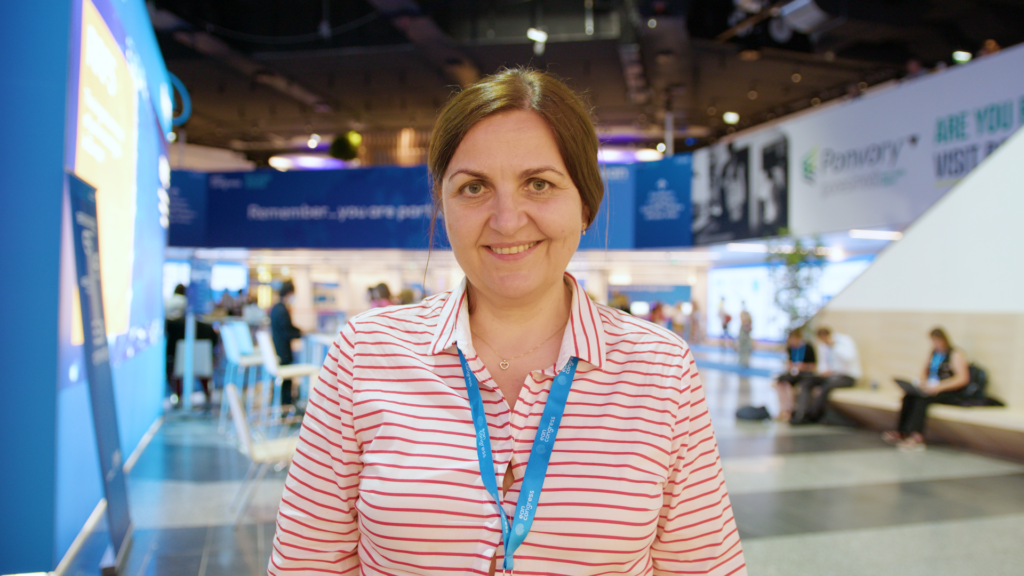Multiple sclerosis (MS) typically presents as a relapsing-remitting form (RRMS) that is characterised by neuroinflammation. Over time, this evolves into a secondary progressive form that shows more indolent inflammation but significant irreversible neurodegeneration. Maintaining this inflammatory state relies on immunologic memory and maintaining a pool of autoreactive lymphocytes.1 Many experts have hypothesised that there is a ‘therapeutic window’ during which immunomodulatory interventions may prevent or delay progressive, irreversible neurological dysfunction in patients with RRMS.2 The goal of MS therapy is to achieve a state known as ‘no evidence of disease activity’ (NEDA); a composite endpoint comprising the absence of clinical relapse, disability progression and any evidence of radiological disease activity on magnetic resonance imaging (MRI).3
While disease-modifying therapy (DMT) can achieve NEDA to varying extents, most patients with RRMS who receive DMTs experience breakthrough disease activity.4 Discontinuation of DMTs typically results in reactivation of disease activity within months and is therefore not recommended.4 Consequently, patients are exposed to agents with potentially serious adverse effects (AEs) for years. The use of immune ablation and reconstitution of the immune system using autologous haematopoietic stem cell transplantation (HSCT) has been proposed as a more intensive approach.5 The use of HSCT is a potentially curative standard therapy for a variety of malignant and non-malignant disorders.6 However, until recently, HSCT treatment for MS has been considered experimental and dangerous.5 In recent years, a number of studies have explored different conditioning regimens, including chemotherapy, immune-depleting biological agents, and/or radiation therapy, and have concluded that HSCT is safe and efficacious over a 3–5-year follow-up period.5
Following renewed interest of the use of HSCT in MS therapy, a focussed workshop on HSCT was held at the 5th Congress of the European Academy of Neurology (EAN), which took place from 29 June to 2 July 2019 in Oslo, Norway.7 Prof. Gianluigi Mancardi of the University of Genoa, Italy, presented the results of a meta-analysis of all published studies of HSCT in any form of MS from 1995–2016, including the phase II Canadian HSCT trial,8 HALT-MS study,9 and the ASTIMS trial.10 Pooled data from 15 studies including 764 transplanted patients showed that transplant-related mortality had dropped substantially during the last 20 years. Patients with aggressive RRMS who have not yet accumulated a high level of disability, are most likely to respond to this treatment. The proportion of patients with NEDA at 2 years was 83% (range 70–92%) and at 5 years was 67% (range 59–70%).11
Dr Joachim Burman of Uppsala University, Sweden, presented the results from the MIST-trial (ClinicalTrials.gov identifier: NCT00273364), the largest randomised controlled trial to date on HSCT for people with MS. Researchers randomly assigned patients to receive HSCT along with cyclophosphamide and antithymocyte globulin (n=55) or a DMT of higher efficacy or different class than that taken during the previous year (n=55). A total of 103 remained in the trial, with 98 evaluated at 1 year and 23 evaluated yearly, for 5 years. Disease progression occurred in three patients in the HSCT group and 34 patients in the DMT group. Median time to progression could not be calculated in the HSCT group because of too few events, and was 24 months in the DMT group (hazard ratio, 0.07; p<0.001). No deaths were reported and no patients who received HSCT developed nonhematopoietic grade 4 AEs.12 We were fortunate to be able to interview Dr Burman at EAN; he shared his expert insights on the MIST trial:
In the final session, Prof. Øivind Fredvik Torkildsen, presented promising preliminary data from the phase III RAM-MS study (ClinicalTrials.gov identifier: NCT03477500), which also evaluated HSCT in patients with RRMS with breakthrough inflammatory disease activity despite ongoing standard immunomodulatory medication. This study compares the efficacy of HSCT with all new MS-medications (mostly alemtuzumab) that were not covered by the MIST-trial.7
Recent MS treatment guidelines from the American Academy of Neurology (AAN)13 and the EAN/European Committee on Treatment and Research in MS (ECTRIMS)14 do not comment on a role for HSCT in MS treatment. With the exception of Sweden, HSCT is currently not registered as a part of standard MS treatment in the public health services of Europe. However, the American Society for Blood and Bone Marrow Transplantation (ASBMT) recently published a position statement in which it stated ‘treatment-refractory relapsing MS with high risk of future disability be considered a ‘standard of care, clinical evidence available’ indication for HSCT. Collaboration of neurologists with expertise in treating MS and transplantation physicians with experience performing HSCT for autoimmune disease is crucial for ensuring appropriate patient selection and optimizing transplantation procedures to improve patient outcomes.’15
A number of challenges need to be overcome before the use of HSCT becomes integrated into routine clinical practice. These include appropriate patient selection, improvements in transplant procedures, and optimal timing of this treatment. A 2017 study found that, following HSCT, MS patients showed accelerated whole-brain atrophy that was likely associated with treatment-related toxicity. Atrophy eventually slowed to that expected from normal aging, but this warrants further investigation.16 Transplant units may have limited resources to treat patients with MS, while neurologists that may not be familiar with HSCT. In addition, larger, long term studies are needed to provide further evidence of efficacy and safety. Nevertheless, a growing body of evidence is showing that HSCT can be more beneficial than conventional DMTs in achieving NEDA, especially in RRMS patients. The use of HSCT is likely to become more widespread in carefully selected MS patients.
References
1. Gandhi R, Laroni A, Weiner HL. Role of the innate immune system in the pathogenesis of multiple sclerosis. J Neuroimmunol. 2010;221:7–14.
2. Baecher-Allan C, Kaskow BJ, Weiner HL. Multiple sclerosis: mechanisms and immunotherapy. Neuron. 2018;97:742–68.
3. Giovannoni G, Turner B, Gnanapavan S, et al. Is it time to target no evident disease activity (NEDA) in multiple sclerosis? Mult Scler Relat Disord. 2015;4:329–33.
4. O’Connor PW, Goodman A, Kappos L, et al. Disease activity return during natalizumab treatment interruption in patients with multiple sclerosis. Neurology. 2011;76:1858–65.
5. Das J, Sharrack B, Snowden JA. Autologous haematopoietic stem cell transplantation in multiple sclerosis: a review of current literature and future directions for transplant haematologists and oncologists. Curr Hematol Malig Rep. 2019;14:127–35.
6. Duarte RF, Labopin M, Bader P, et al. Indications for haematopoietic stem cell transplantation for haematological diseases, solid tumours and immune disorders: current practice in Europe, 2019. Bone Marrow Transplant, 2019; doi: 10.1038/s41409-019-0516-2. [Epub ahead of print].
7. Torkildsen ØF. EAN 2019: Focused Workshop 12 – Autologous hematopoietic stem cell transplantation in multiple sclerosis. Autologous hematopoietic stem cell transplantation in multiple sclerosis – results and future directions. 2019. Available at: www.eanpages.org/2019/07/02/ean-2019-focused-workshop-12-autologous-hematopoietic-stem-cell-transplantation-in-multiple-sclerosis/ (accessed 7 July 2019).
8. Atkins HL, Bowman M, Allan D, et al. Immunoablation and autologous haemopoietic stem-cell transplantation for aggressive multiple sclerosis: a multicentre single-group phase 2 trial. Lancet. 2016;388:576–85.
9. Nash RA, Hutton GJ, Racke MK, et al. High-dose immunosuppressive therapy and autologous hematopoietic cell transplantation for relapsing-remitting multiple sclerosis (HALT-MS): a 3-year interim report. JAMA Neurol. 2015;72:159–69.
10. Mancardi GL, Sormani MP, Gualandi F, et al. Autologous hematopoietic stem cell transplantation in multiple sclerosis: a phase II trial. Neurology. 2015;84:981–8.
11. Sormani MP, Muraro PA, Schiavetti I, et al. Autologous hematopoietic stem cell transplantation in multiple sclerosis: A meta-analysis. Neurology. 2017;88:2115–22.
12. Burt RK, Balabanov R, Burman J, et al. Effect of nonmyeloablative hematopoietic stem cell transplantation vs continued disease-modifying therapy on disease progression in patients with relapsing-remitting multiple sclerosis: a randomized clinical trial. JAMA. 2019;321:165–74.
13. Rae-Grant A, Day GS, Marrie RA, et al. Practice guideline recommendations summary: Disease-modifying therapies for adults with multiple sclerosis: Report of the Guideline Development, Dissemination, and Implementation Subcommittee of the American Academy of Neurology. Neurology. 2018;90:777–88.
14. Montalban X, Gold R, Thompson AJ, et al. ECTRIMS/EAN guideline on the pharmacological treatment of people with multiple sclerosis. Eur J Neurol. 2018;25:215–37.
15. Cohen JA, Baldassari LE, Atkins HL, et al. Autologous hematopoietic cell transplantation for treatment-refractory relapsing multiple sclerosis: position statement from the American Society for Blood and Marrow Transplantation. Biol Blood Marrow Transplant. 2019;25:845–54.
16. Lee H, Narayanan S, Brown RA, et al. Brain atrophy after bone marrow transplantation for treatment of multiple sclerosis. Mult Scler. 2017;23:420–31.


